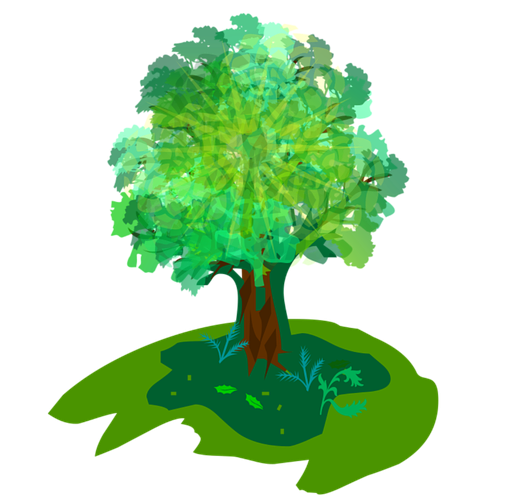Instant Tricks to Decrease Blood Pressure
I. Introduction
High blood pressure, also known as hypertension, is a common health condition that affects millions of people worldwide. It is often referred to as the “silent killer” because it typically has no symptoms until it has caused significant damage. High blood pressure means that the force of blood against your artery walls is consistently too high, which can lead to serious health problems such as heart disease and stroke.
Maintaining healthy blood pressure levels is crucial for overall health and longevity. It reduces the risk of heart disease, stroke, and other serious health conditions. Furthermore, it contributes to the overall quality of life, enabling individuals to lead active and fulfilling lives.
Fortunately, there are several instant tricks that can help decrease blood pressure. These include lifestyle changes, dietary adjustments, and certain exercises. This article will provide an overview of these tricks and how they can be incorporated into your daily routine.
II. Understanding Blood Pressure
Blood pressure is the force exerted by circulating blood against the walls of the body’s arteries, the major blood vessels in the body. It is measured in millimeters of mercury (mmHg) and is presented as two values: systolic pressure over diastolic pressure. The systolic pressure is the maximum pressure during one heartbeat, while the diastolic pressure is the minimum pressure between two heartbeats.
Understanding your blood pressure readings is crucial for maintaining good health. A normal blood pressure reading is typically around 120/80 mmHg. High blood pressure is defined as a reading of 130/80 mmHg or higher on multiple occasions. Prehypertension, a precursor to high blood pressure, is defined as a reading between 120/80 mmHg and 129/79 mmHg.
High blood pressure can have serious consequences if left untreated. It can lead to heart disease, stroke, kidney disease, and other health problems. Therefore, it is important to monitor your blood pressure regularly and take steps to control it if it is high.
III. Lifestyle Changes to Lower Blood Pressure
A balanced diet is crucial for maintaining healthy blood pressure levels. This includes eating a variety of fruits, vegetables, whole grains, lean proteins, and low-fat dairy products. It is also important to limit the intake of sodium, saturated fats, and added sugars. A balanced diet not only helps lower blood pressure but also contributes to weight management and overall health. For more information on a balanced diet, visit our page on dietary plans and recipes.
Regular physical activity plays a significant role in lowering blood pressure. It helps strengthen the heart, making it more efficient at pumping blood. This, in turn, reduces the force on the arteries, lowering blood pressure. The American Heart Association recommends at least 150 minutes of moderate-intensity exercise or 75 minutes of vigorous-intensity exercise per week. For more tips on exercise, check out our page on exercise and fitness.
Maintaining a healthy weight is also important for blood pressure control. Excess weight can increase the strain on the heart and arteries, leading to high blood pressure. Therefore, if you are overweight, losing even a small amount of weight can help lower your blood pressure. For more information on weight loss, visit our page on the best diet for weight loss.
IV. Instant Tricks to Decrease Blood Pressure
Deep breathing exercises can help lower blood pressure by relaxing and dilating the blood vessels, allowing blood to flow more freely. This can be done anywhere and at any time, making it a convenient and effective method for blood pressure control.
Progressive muscle relaxation, a technique that involves tensing and then releasing different muscle groups, can also help lower blood pressure. It promotes relaxation and reduces stress, which are both beneficial for blood pressure control.
Quick paced walking is another effective method for lowering blood pressure. It helps strengthen the heart and improve circulation, leading to lower blood pressure. For more information on the benefits of walking, visit our page on exercise and fitness.
Drinking a glass of water can help lower blood pressure by improving hydration. Dehydration can cause blood vessels to narrow, leading to increased blood pressure. Therefore, staying hydrated is important for maintaining healthy blood pressure levels. For more information on hydration, visit our page on the benefits of hydration.
Eating potassium-rich foods can help lower blood pressure by balancing out the negative effects of sodium. Foods high in potassium include bananas, oranges, potatoes, spinach, and yogurt. For more information on potassium-rich foods, visit our page on dietary plans and recipes.
Dark chocolate contains flavonoids, which are natural compounds that cause dilation of the blood vessels. Consuming a small amount of dark chocolate daily can help lower blood pressure.
Listening to calming music can help lower blood pressure by reducing stress and promoting relaxation. Similarly, practicing yoga or meditation can help lower blood pressure by promoting relaxation and reducing stress. For more information on yoga and meditation, visit our page on mental wellness and stress management.
Drinking hibiscus tea can help lower blood pressure. Hibiscus is rich in anthocyanins and other antioxidants that help lower blood pressure. Similarly, using lavender essential oil can help lower blood pressure by promoting relaxation and reducing stress.
V. Medical Interventions for High Blood Pressure
Prescription medications are often necessary for individuals with high blood pressure. These medications work in different ways to lower blood pressure. Some remove extra fluid and salt from your body, others slow down your heartbeat or relax and widen your blood vessels.
Regular check-ups and monitoring are crucial for individuals with high blood pressure. This allows doctors to monitor the effectiveness of treatment and make necessary adjustments. It also provides an opportunity for individuals to ask questions and express any concerns they may have.
Following the doctor’s advice is crucial for managing high blood pressure. This includes taking prescribed medications as directed, making recommended lifestyle changes, and attending all follow-up appointments. For more information on managing high blood pressure, visit our page on natural remedies and supplements.
VI. Conclusion
In conclusion, there are several instant tricks that can help decrease blood pressure. These include deep breathing exercises, progressive muscle relaxation, quick paced walking, drinking a glass of water, eating potassium-rich foods, consuming dark chocolate, listening to calming music, practicing yoga or meditation, drinking hibiscus tea, and using lavender essential oil.
Maintaining healthy blood pressure levels is crucial for overall health and longevity. It reduces the risk of heart disease, stroke, and other serious health conditions. Therefore, it is important to incorporate these tricks into your daily routine.
Remember, while these tricks can help, they are not a substitute for medical advice. If you have high blood pressure, it is important to consult with your doctor and follow their advice. With the right treatment and lifestyle changes, high blood pressure can be effectively managed.







